Are you craving that cloudy, deep gold German Hefeweizen beer style?
We don’t blame you!
This wheat beer is a popular choice in the industry. Brewing Hefeweizen makes use of a special yeast, bittering hops, and a specific malt blend.
But Hefeweizen sets itself apart from other wheat beers because of its unique fruity and clove flavors. Not to mention, this beer has a distinct appearance.
And here’s the good news:
You can brew this great beer at home! And we’re here to tell you how. Also, in this article, we’ll talk about:
- How much wheat malt, pilsner malt, and other grains you’ll need to brew this beer style;
- The hops that would add just the right bitterness to your brew – and when you’re going to put them in;
- When you’re going to pitch the yeast and types would work best;
- The step-by-step process of brewing and the exact temperatures that your wort should be in;
- Alternatives to the ingredients and some optional steps in the process; and
- Lots more!
Be sure to check out our tips that would help you achieve the right Hefeweizen brew.
We have a complete description of what you should see, smell, and taste to know that you just drank a real Hefeweizen!
Ready?
Bottoms up…
Hefeweizen Recipe: Equipment
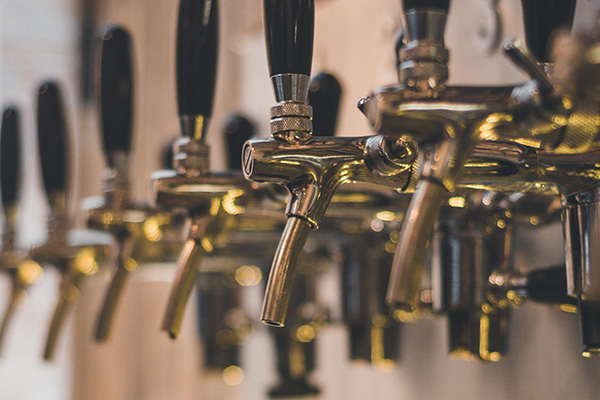
Homebrewing your beer is beginner-friendly. You can rummage the online market for a brewing kit and start your new hobby. But where’s the fun in that?
Anyway…
There’s no need for too many tools. The equipment you need for brewing Hefeweizen is simple and easy to find.
You should have a large pot and stove where you’ll boil the mash, a fermentation chamber, and a wort chiller, bottling bucket, or storage bottle.
Just some notes:
One of the best wort chillers is the coil-in-coil design. It prevents stuck mashes and sparging, reducing the risk of contamination.
You may also need special equipment for step mashing if you choose to do that step.
Later…
… when we get to the step-by-step instructions, you’ll be able to judge for yourself what method you want to try. Then, you’ll also be able to choose the equipment that you need.
Hefeweizen Recipe: Ingredients
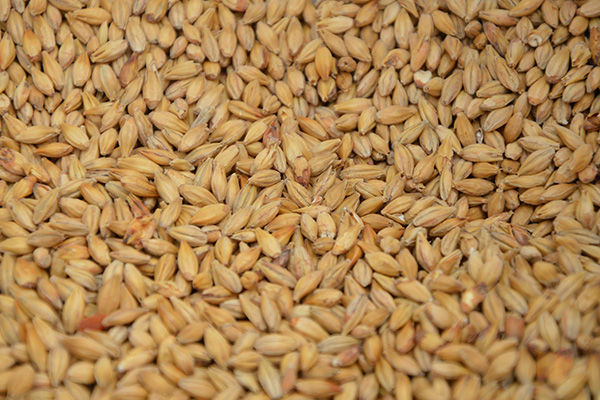
You’ll find in this section the ingredients and how much of each you’ll need. It’s not exactly the same as some recipes.
Others would recommend different grains or malt and a different proportion. But this is what worked for us.
Also…
We tried to stick to the original recipes as much as we could.
There’d been revisions, but after trying different things, we were able to conclude that this particular blend of ingredients and process yields the best results.
Malt or Grain bill
For this beer style, you’ll need a blend of four different types of malt.
Namely:
- 4.5 lbs of Pilsner malt
- 4.5 lbs of Wheat malt (if you can’t find German wheat, either white wheat or American wheat would do)
- 8 ounces of Munich; and
- 8 ounces of Dextri
You might’ve noticed that the biggest components are German Pilsner malt and wheat malt – Hefeweizen is a wheat beer, after all.
And then you’ll need small portions of Munich and Dextrin malt. These two are optional, but we suggest that you stick to this recipe as much as possible to get the best results.
Hops
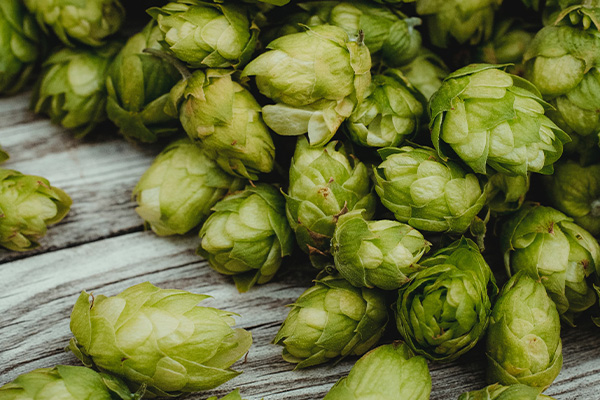
Hefeweizen, as mentioned before, is a German beer. So we strongly suggest that you use German noble hops for this brew.
Our best recommendation is 1.5 ounces of Hallertauer.
Divide it into two parts – 1 oz and 0.5 – because you’ll be adding it to the mash in a separate schedule.
Also…
You may also add one ounce of Lemondrop. But this is an optional ingredient for an optional step in the process.
Yeast
Hefeweizen uses a special yeast that the Germans developed, specifically for this beer style. It’s the one responsible for the fruity taste.
It’s called Wyeast 3068 Weihenstephan Weizen.
But…
If you can’t find this particular yeast, we have close alternatives.
It’s easier to get White Labs WLP300 Hefeweizen ale yeast, based on our experience. And White Labs WLP320 American Hefeweizen will work too.
Water
Any kind of water would do, just as long as it’s not highly chlorinated. You might need to test what you have and cure it.
But if you can get ahold of 19 liters of distilled water, that would be great. (This particular recipe is for a five-gallon batch.)
Hefeweizen Recipe: Our Step-by-Step Guide

Hefeweizen’s brew process is not that hard. But you need to pay attention to the specifics, especially the mash and fermentation temperatures.
Why so?
A little bit colder and it won’t attenuate properly. And if the heat goes up even slightly, there’ll be an overgrowth of yeast that would ruin the wort.
So, better take notes…
Mash
The first thing to do is mix all your malt extracts or grain bill into the water. Your brew pot should be big enough to accommodate that much liquid and still have space for it to boil.
Now, there are two ways to mash your extracts.
First…
You can opt for a step mash. It’s so much safer and easier for beginners to achieve Hefeweizen by doing this. However, there’s a piece of special equipment for step mash so that it would cost you more.
If you happen to have it, set your mash at a 110-degree Fahrenheit rest for 20 minutes. And when the time’s up, raise the temperature to 152 degrees.
Second…
If you don’t have step mash equipment, you can do a single infusion mash. After mixing the malt with water, heat it to 153 degrees Fahrenheit.
Boil
While it’s boiling, it’s time to add hops following the schedule.
Again, please pay attention to get the best results!
As the mash begins to boil…
… add in 0.5 oz of the Hallertauer hops. And then set a timer for 60 minutes.
Exactly as it goes off, add the rest of the Hallertauer hops and the Lemondrop (if you opted to add it in.)
Ferment
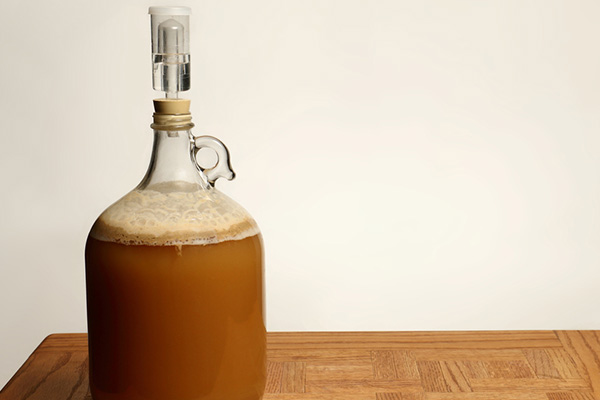
After the hops…
Immediately pitch the yeast. Be careful not to mix it or put in too much. You’ll only need 1.7 packages of it for this brew size.
Then…
Transfer the wort to the fermentation chamber and set the temperature at 68 degrees Fahrenheit. Let it be for two to three days.
Before the second or third day is up, slowly raise the temperature to 74 degrees Fahrenheit. This is an optional step, so you can try experimenting on this part.
Based on our experience…
Raising the temperature a few hours before the end of fermentation helps the beer to reach its best attenuation.
But if you’re not confident about it, just leave it at 68 degrees and let it brew for a full week for full attenuation.
Aerate
Before the beer cools down, you need to transfer it to your storage bottles.
But first…
Aerate the bottles with 2.7 volumes of carbon dioxide. This step will ensure that the proper esters develop, and it would keep the beer brewing even while in storage.
If you want to consume it as soon as possible, you can store it another way.
Transfer the beer to a bottling bucket and add corn sugar or other forms of primers. The sweetness will add to its distinct Hefeweizen taste.
Enjoy
There you go!
After patiently boiling and one week of fermentation, you can now enjoy your homebrewed, unfiltered beer.
There’s nothing like an authentic Hefeweizen wheat beer, especially when served in a beer vase with some seafood and Chevre cheese!
But don’t go just yet…
Tips on Brewing Your Hefeweizen Beer
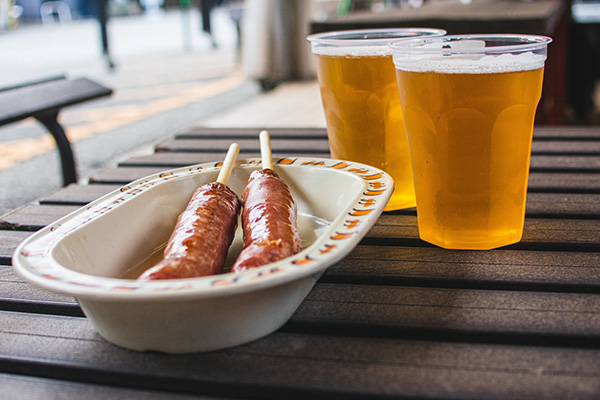
As you explore homebrewing your beers, you might encounter other recipes and instructions that might confuse you.
So take note of this:
Not all beers are the same. They all differ in taste, mouthfeel, aroma, and appearance. That’s the result of different ingredients and processes.
So, let’s talk about some tips to ensure that you’re brewing a Hefeweizen instead of any other style.
Unlike other beer styles…
You shouldn’t do cold crashing or lagering when brewing Hefeweizen. That’s because the purpose of that process is to prevent yeast suspension.
Consequently, the beer clears up when it’s cold crashed.
And you must know by now that traditional, German, or Bavarian Hefeweizen is not a clear type of beer. It’s cloudy with a white head that stays longer than white beer.
Another thing…
As much as possible, steer clear of yeast starters, especially those based on rice hulls. It would add off-flavors and might reduce hop bitterness.
Lastly…
As the mash boils, some of the water will evaporate and leave your mixture a few milliliters short of 5 gallons.
To prevent that, you can add near-boiling water now and then to replenish. Just don’t put in too much to prevent drastic changes to the flavor.
Hefeweizen Characteristics
You can just walk into a bar or brewery and ask for a German Hefeweizen beer. But how would you know if it’s authentic?
Technically…
Its original gravity is 1.044 to 1.052 OG, and its final gravity is 1.010 to 1.014 FG. It falls within 8 to 15 IBU (international bitterness unit) and 4.3 to 5.6% ABV (alcohol by volume).
Those might not mean much to you, but it’s very important in perfecting your brew.
But you don’t have to worry about that just yet. You can first judge the beer qualitatively. If you’re not familiar with it…
Let me tell you.
First, you should look at the color. If it looks too sharp, don’t trust the bartender because Hefeweizen is a cloudy, pale straw or deep gold. In the color scheme, it falls between 2 to 6 SPM.
The suspended yeast blurs the color and adds a unique taste to the beer.
Speaking of…
Pay attention to its flavor. If you taste a bit of clove and banana, you’re holding the right bottle.
And Hefeweizen beer is widely described to have a distinct grain character and soft maltiness. It also has a dry finish and light to medium mouthfeel.
And in terms of aroma…
You should be able to smell the malt and hop character. A little vanilla or bubblegum is also possible, but it shouldn’t smell too sweet.
Rather, it should be fruity because the yeast used derives a strong ester flavor.
If your brew ticks off all those qualities, then you’re on the right track!
Conclusion

That’s about it!
That’s our simple recipe for a great Hefeweizen that you can try at home.
All your efforts from shopping for ingredients up to bottling day will all be worth it once you finally get those banana and vanilla flavors – but with just the right bitterness and alcohol content.
But before you go…
We’d like to remind you – brewing needs practice. Don’t get too worked up if you couldn’t make a perfect Hefeweizen beer on the first try.
All those ingredients – malt, hops, and especially the yeast – need careful handling. And every step of the way, the beer should be in a controlled condition.
Don’t worry – you’ll get the hang of it. In the meantime…
Drink responsibly!




